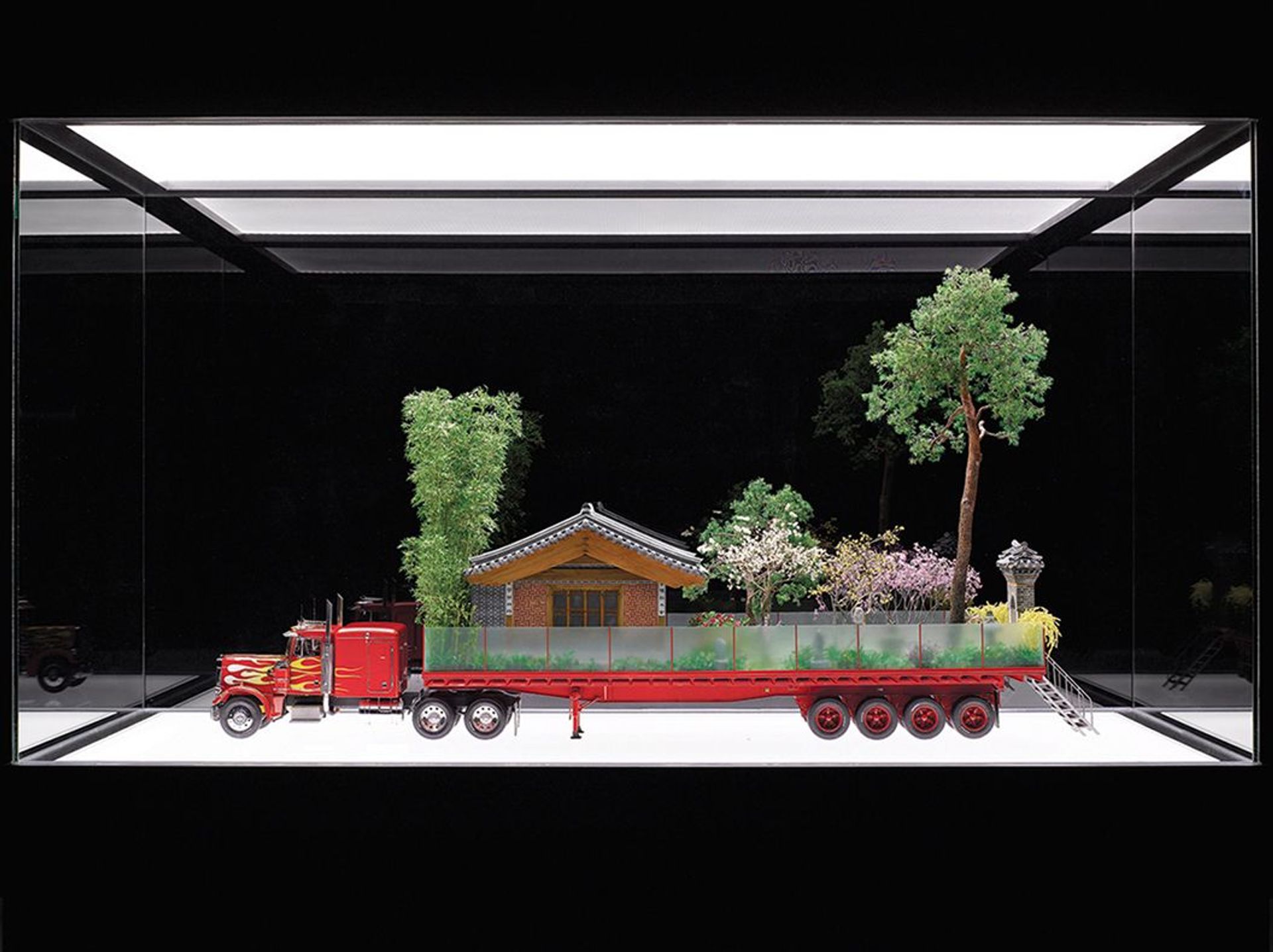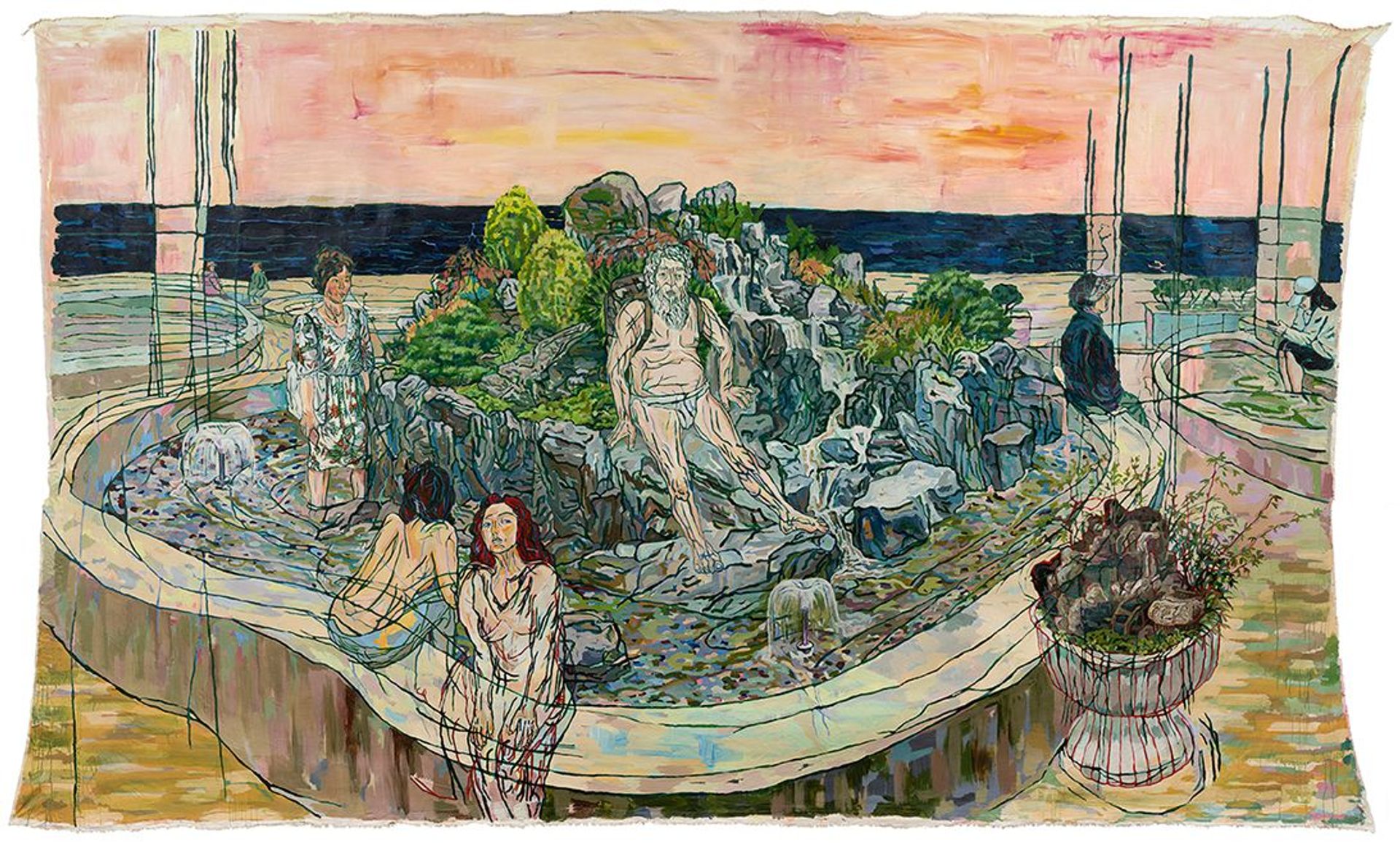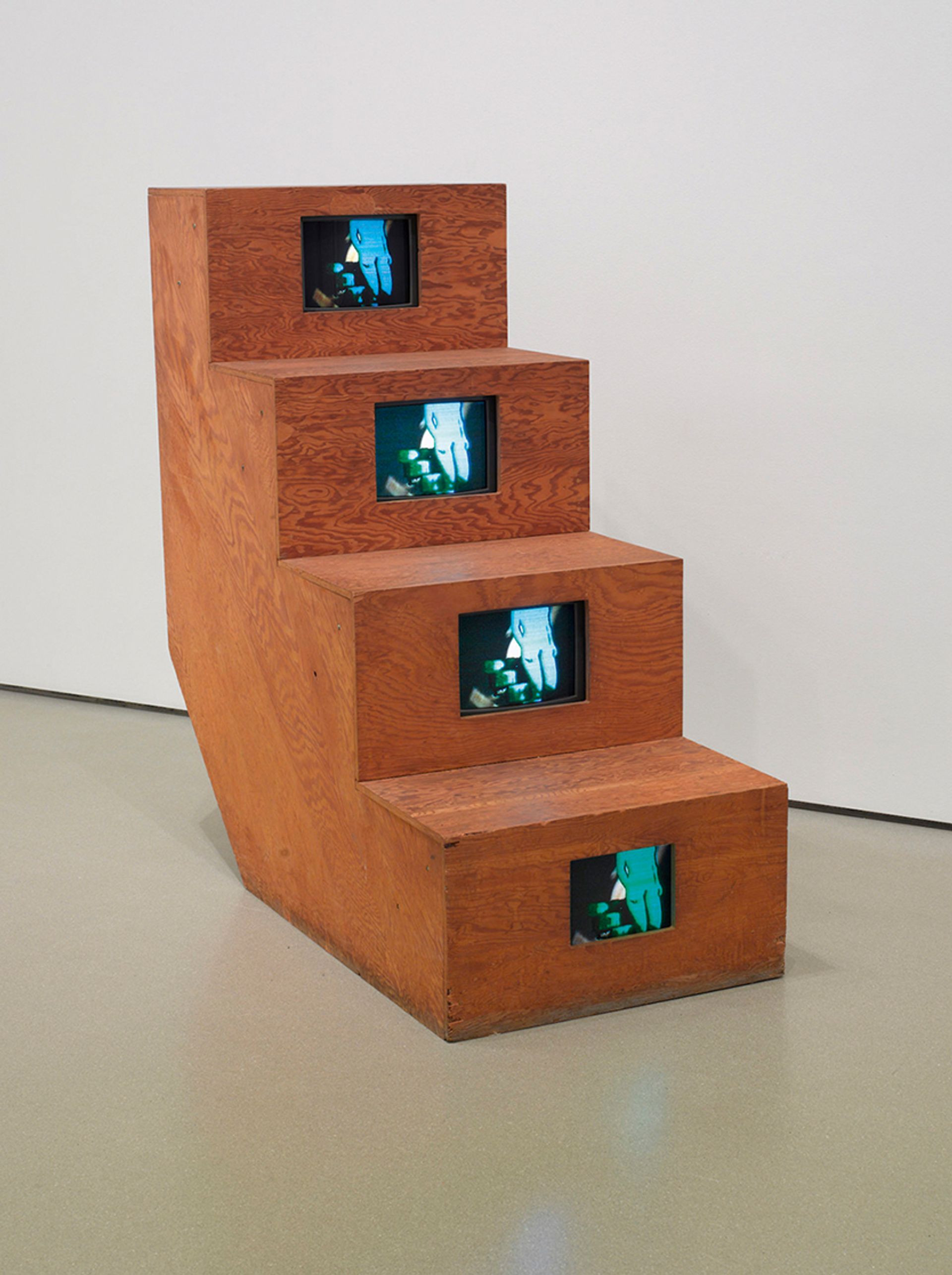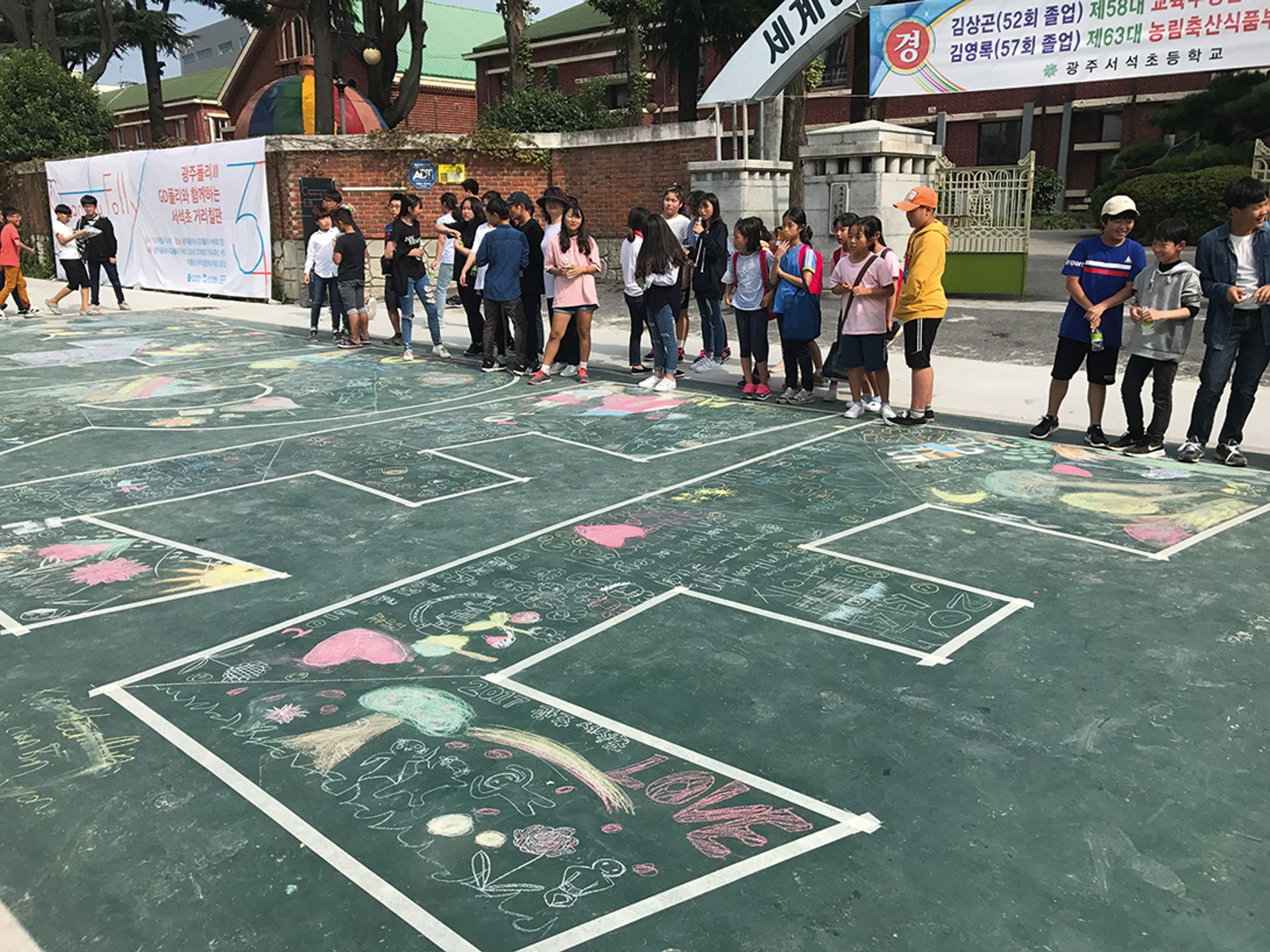Elmgreen & Dragset: Spaces
Amorepacific Museum of Art, 3 September-23 February 2025
In 2016, Michael Elmgreen and Ingar Dragset staged a fictional art show, The Well Fair, at the UCCA Center for Contemporary Art in Beijing. Unlike other fairs, it exclusively featured works by the Berlin-based artistic duo: “Bliss!” they joked in a recent interview with The Art Newspaper. This new show in Seoul is even more ambitious, their biggest in Asia to date.
It is being held at the Amorepacific Museum of Art, which is housed at the headquarters of the South Korean cosmetics conglomerate.
There are more than 60 works in five immersive installations. In the first room, visitors enter a small family house, with its rooms dotted with sculptural works and pieces of furniture. In another, there is the duo’s regular motif of an empty swimming pool, while other spaces hold an empty restaurant, an industrial kitchen and an artist’s studio.
Spaces is the beginning of an exciting couple of months for the pair: they will be taking over the sculpture hall of the Musée d’Orsay from 15 October.
Lee Cheshire

Do Ho Suh’s Secret Garden (2012) is showing in his exhibition Speculations at the Art Sonje Center in Seoul, which is running until 3 November
Courtesy of Do Ho Suh; Lehmann Maupin, New York and Seoul; Victoria Miro, London/Venice, © Do Ho Suh
Do Ho Suh: Speculations
Art Sonje Center, until 3 November
In Do Ho Suh’s earliest and best known works, he recreated his childhood home in Seoul, turning it into ghostly fabric in a gallery in Los Angeles. For this exhibition in the city of his birth, he will recreate his current home in London, where he has lived since 2010.
Art Sonje Center, a private art museum in the Samcheong neighbourhood of Seoul, was the venue for his first solo show in South Korea back in 2003. Twenty-one years later, the whole museum has been taken over for an overview of the Speculations series, which he has been working on since 2005. These are the projects that are impractical or impossible to bring into full-size reality. Some exist as plans or texts, while others have been made into whimsical scale models of buildings and vehicles, as if from a toy train set.
Suh said in a statement: “I’ve wanted to bring my models, which are similar to architectural models although they engage with fictional and conceptual realms, together for years, so I’m very pleased to be doing that at Art Sonje Center. It is, of course, always meaningful for me to exhibit in Seoul and there’s a strong synchronicity with the work on display and the city of my birth.”
L.C.

Bang Jeong-a’s America, his unwavering attitude (2021) is showing at the Busan Biennale until 20 October
Bang Jeong-a
Busan Biennale
Until 20 October
This year’s Busan Biennale, called Seeing in the Dark, plunges into an oft-used descriptor for our uncertain era. “We are always hearing about ‘living in dark times’ and we wanted to explore what this might offer, not as something negative, but to look at ideas and communities that have had to embrace darkness,” says Vera Mey, who is the exhibition’s co-artistic director, alongside Philippe Pirotte.
The biennale this year expands beyond the Busan MoCA venue to two converted historical banks and a residential building. Featuring 62 artists and collectives from 36 countries, the exhibition includes several non-visual works, including HongLee Hyunsook’s hearing and touch-based art. In looking for an alternative to the European Enlightenment, both artistic directors have been inspired by two very different historical precedents: the so-called “pirate utopias” set up by pirate bands who were often surprisingly democratic and tolerant; and Buddhist monasteries, where decisions were also often made by communal assent.
Lisa Movius

Shigeko Kubota’s Duchampiana: Nude Descending a Staircase (1976) is showing at MMCA Seoul
Courtesy of Shigeko Kubota Video Art Foundation
Connecting Bodies: Asian Women Artists
MMCA Seoul, 3 September-3 March 2025
The Museum of Modern and Contemporary Art (MMCA) in Seoul opens the ambitious retrospective Connecting Bodies: Asian Women Artists this week. The show’s six sections include experiences of sexuality and how the male gaze renders women as goddesses or monsters. The 130 works included come from around 60 artists, including Malaysia’s Yee I-Lann, China’s Yin Xiuzhen, Indonesia’s Melati Suryodarmo and the Philippines’ Pacita Abad.
“Today, as we witness environmental crisis, the acceleration of capitalism and wars, we dream of an alternative world that can overcome these challenges,” says MMCA curator Bae Myungji. “Solidarity and coexistence are emerging as a way of thinking and living that make this alternative world possible. Connection, symbiosis, coexistence and solidarity have long been attitudes, ways of life and philosophies for Asian women. And this perspective is reflected in various aspects of contemporary Asian women’s artworks.”
L.M.

I Love Street by MVRDV architects at Gwangju Folly, a project of the Biennale
Gwangju Biennale
Gwangju Biennale
7 September-1 December
One of Asia’s most prestigious art events, this year’s Gwangju Biennale is tackling the biggest themes there are: the history of human civilisation, climate change and Covid-19. The artistic director is the prominent French curator and theorist Nicolas Bourriaud. “From social distancing due to the pandemic to climate change, including flooding, desertification and rising sea levels due to global warming, humanity’s relationship with space has changed dramatically over the past few years,” he says. “It is time for a profound discussion about our changed senses and perceptions of spaces.” The title of the biennale is Pansori – a soundscape of the 21st century, which pays tribute to pansori, a traditional musical form which originated in south-west Korea. Its literal meaning is “the sound of the public place”. The biennale will be “built as a narrative about the spaces we live in,” says Bourriaud.
Next year is the 30th anniversary of the Gwangju Biennale, which was founded in remembrance of the 1980 massacre of hundreds of the city’s people after they rose up against the then-military dictatorship.
L.C.


